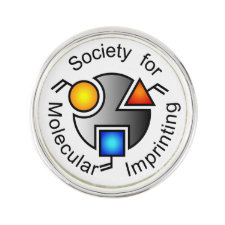
Authors: Ferreira NS, Moreira APT, de Sá MHM, Sales MGF
Article Title: New electrochemically-derived plastic antibody on a simple conductive paper support for protein detection: Application to BSA.
Publication date: 2017
Journal: Sensors and Actuators B: Chemical
Volume: 243
Page numbers: 1127-1136.
DOI: 10.1016/j.snb.2016.12.074
Alternative URL: http://www.sciencedirect.com/science/article/pii/S0925400516320457
Abstract: A novel device for targeting proteins with a Molecularly-Imprinted Polymer (MIP) recognition material is presented herein, by employing wax paper with conductive ink as background support. Cellulose paper was modified with paraffin wax to make it waterproof, and afterwards covered by a carbon ink to make it conductive, achieving the goal to make easy and low cost supports, and, in this case, with good detection features. Bovine Serum Albumin (BSA) was used herein as target protein. Albumin has an important role in the human body and BSA is normally used as its model protein because of its good stability and low cost. The development of BSA detection systems is important in various fields, such as biochemistry, medicine and pharmacy. Raman measurements were conducted during all preparation stages of the recognition material and electrochemical assays were used to evaluate the analytical performance of the sensor. The assembly of the device was optimized by employing different polymerization timings and monomers of different chemistries and charges. In general, longer polymerization periods and the use of a positively charged monomer benefited the analytical response. The results obtained within different calibrations indicated a linear response over a wide concentration range, from 0.005 to 100 mg/mL of BSA in buffer solution. In addition, the analytical evaluation of the device under several background solutions, including synthetic and real urine, supported the good performance of the sensor and pointed out that the principle of sensor assembly may be extended to other proteins in urine. In addition, the detection capabilities of the device proposed herein are better than other BSA sensing devices relying on electrochemical transduction
Template and target information: protein, bovine serum albumin, BSA
Author keywords: molecularly imprinted polymer, BSA, electropolymerization, Cellulose paper, Carbon conductive ink



Join the Society for Molecular Imprinting

New items RSS feed
Sign-up for e-mail updates:
Choose between receiving an occasional newsletter or more frequent e-mail alerts.
Click here to go to the sign-up page.
Is your name elemental or peptidic? Enter your name and find out by clicking either of the buttons below!
Other products you may like:
 MIPdatabase
MIPdatabase









